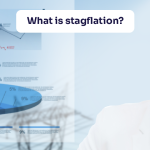Investors depend on the historical performance while selecting mutual fund schemes for their portfolios, and rightly so. After all, the past returns generated by a scheme hint at the quality of fund management.
With Securities and Exchange Board of India (SEBI) introducing Categorisation and Rationalisation norms, past performance of mutual funds won’t give you any guidance about their potential.
Are the past returns relevant? It is a million dollar question.
What has changed exactly?
Earlier, there was no standard definition to classify companies as large-mid-small caps.
Every mutual fund house classified stocks as large caps, mid-caps or small caps at its discretion. Due to this, comparing various schemes from the same category became difficult as there was a considerable disparity in the underlying portfolios.
Take UTI Mid Cap Fund and SBI Mid Cap Fund for example.
Earlier, UTI Mid Cap Fund invested at least 65% of its net assets in equity and equity related instruments issued by companies which were constituents of the CNX Mid Cap Index or S&P CNX 500 but not a part of the BSE Sensex (30) or Nifty (50), at the time of investment.
SBI Mid Cap Fund, on the other hand, defined mid-caps as the stocks that fell between the 101st to 400th stocks, when ranked on market capitalisation.
Categorisation and rationalisation norms are aimed at ironing out these differences.
As per new rules, top 100 companies on of market capitalisation are considered as large caps. Those falling between 101st and 250th are considered as mid-caps, and the 251st onwards are treated as small caps.
As per the new norms, any mid-cap fund is now mandated to maintain 65% of its portfolio in mid-cap stocks. This brought changes to the portfolio composition of several funds.
The table below depicts the change in the market capitalisation of UTI Mid Cap Fund.
| Market Cap | Large Cap (%) | Mid Cap (%) | Small Cap (%) | Others (%) |
| Old Definition (Sept, 2017) | 22 | 51 | 21 | 6 |
| New Definition (Sept, 2017) | 21 | 40 | 33 | 6 |
| Current Allocation (Nov, 2018) | 12 | 66 | 20 | 2 |
As you can see the investment of UTI Mid Cap Fund in mid-cap stocks went down to 40% of its portfolio as against 51% post, the new norms kicked in. UTI Mid Cap Fund was required to churn 25% of its portfolio to comply with the new rules.
Change in the fundamental objectives is another reason why past performance is irrelevant
Post SEBI’s re-categorisation norms, ‘fundamental attributes’ of many schemes underwent a change. To explain this, let’s consider ICICI Prudential Small Cap Fund (the erstwhile ICICI Prudential Indo Asia Equity Fund).
The table below shows the asset allocation before and after recategorisation –
| Before | After | ||
| ICICI Prudential Indo Asia Equity Fund | ICICI Prudential Small Cap Fund | ||
| Instruments | Allocation (%) | Instruments | Allocation (%) |
| Equity & Equity related securities in India | 65% - 100% | Equity & Equity related securities of Small Cap Companies | 65% - 100% |
| Asian Equity Funds, Equity & Equity related securities or investment in ADR/GDR | 0% - 35% | Equity & Equity related securities of other than Small Cap Companies | 0% - 35% |
| Debt | 0% - 35% | Debt & Money Market instruments | 0% - 35% |
Earlier the fund could invest in the equity of companies from any market cap and also could actively invest in equity of the Asia Pacific region. As per the new norms, the fund manager has to maintain at least 65% domestic small-cap stocks in the portfolio. If we consider the fund’s portfolio, as of September 2018, the fund does not have any overseas exposure. With such a drastic change in the fundamentals, depending on the past performance would be misleading for future investments.
To reduce confusion among investors, SEBI laid down a new rule permitting only one scheme per category.
As a result, many fund houses which had multiple schemes in one category had to merge some of their existing schemes. For example, HDFC Mutual fund had two balanced funds namely HDFC Prudence Fund and HDFC Balanced Fund.
HDFC Balanced Fund merged with HDFC Premier Multi-Cap Fund and got renamed as HDFC Hybrid Equity Fund but it remained in the Balanced Fund (Aggressive Hybrid) category.
On the other hand, HDFC Prudence Fund and HDFC Growth Fund were merged to create HDFC Balanced Advantage Fund. This fund now belongs to the Balanced Advantage category.
This is a significant change as the investment mandate of the fund changed from equity-oriented balanced fund (i.e. equity exposure in the range of 65% to 75% and the rest in debt) to Dynamic Asset Allocation fund (i.e. equity or debt exposure can now move between 0% to 100%).
Existing investors have to check if the reclassified schemes in their portfolio are in line with their risk profile and investment goals.
If there is a major deviation, they will have to be more careful about how they evaluate a fund.
Although the past returns have become irrelevant for now, investors shall wait for mutual fund schemes to build a track record under the new regulatory regime.
Disclaimer:
We, Ventura Securities Ltd, (SEBI Registration Number INH000001634) its Analysts & Associates with regard to blog article hereby solemnly declare & disclose that:
We do not have any financial interest of any nature in the company.
We do not individually or collectively hold 1% or more of the securities of the company.
We do not have any other material conflict of interest in the company.
We do not act as a market maker in securities of the company.
We do not have any directorships or other material relationships with the company.
We do not have any personal interests in the securities of the company.
We do not have any past significant relationships with the company such as Investment Banking or other advisory assignments or intermediary relationships.
We are not responsible for the risk associated with the investment/disinvestment decision made on the basis of this blog article.

Revisiting the Gold-Silver Ratio Amid Silver's Outperformance
4 min Read Dec 22, 2025
Midcaps: Sweet Spot or Danger Zone? | What HSBC MF’s Cheenu Gupta Thinks | Ventura Spotlight
4 min Read Dec 17, 2025
Understanding Option Pin risk near expiry
4 min Read Dec 12, 2025
EPS in the Stock Market
4 min Read Dec 12, 2025
What is stagflation?
4 min Read Dec 10, 2025
Post your comment
You must be logged in to post a comment.